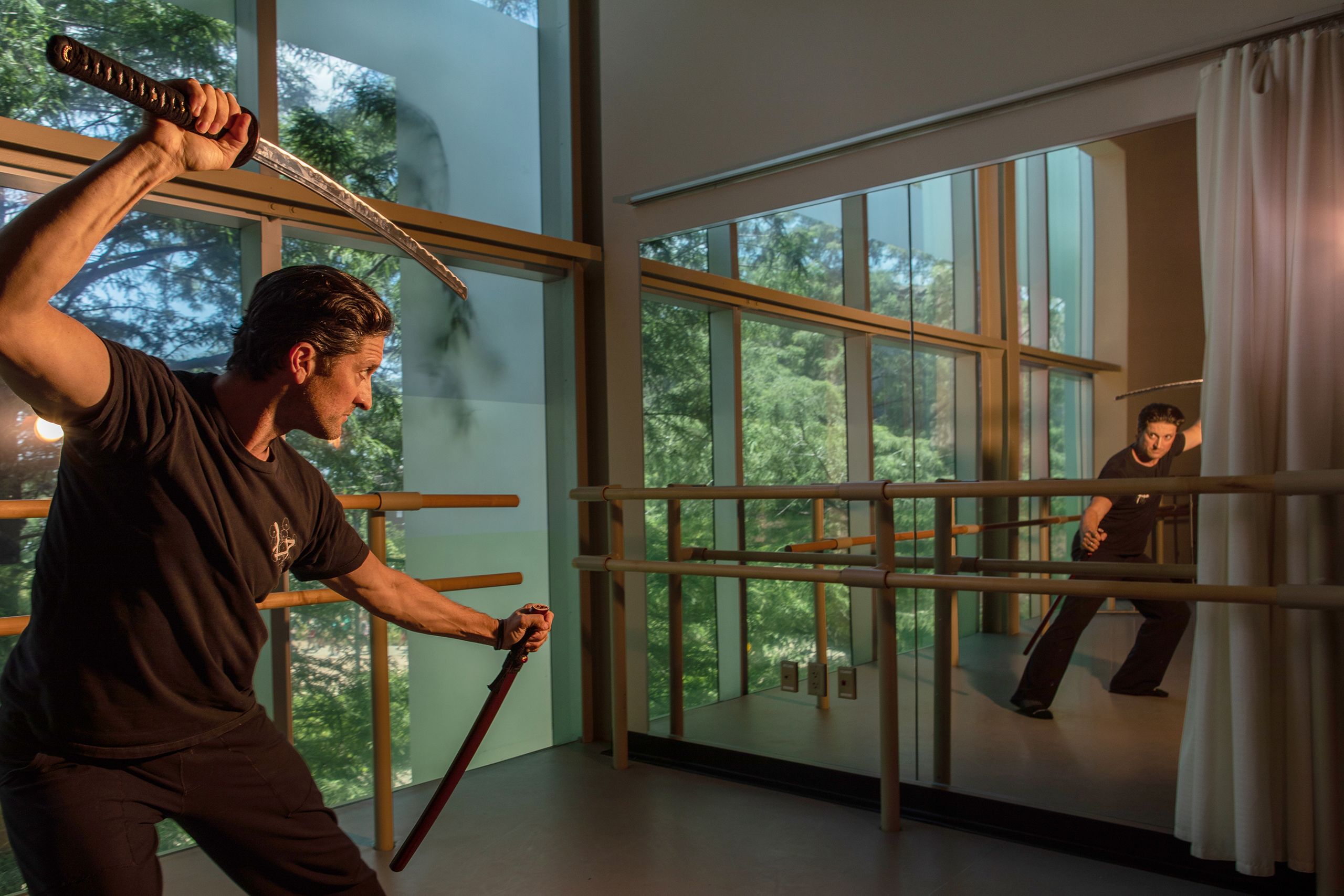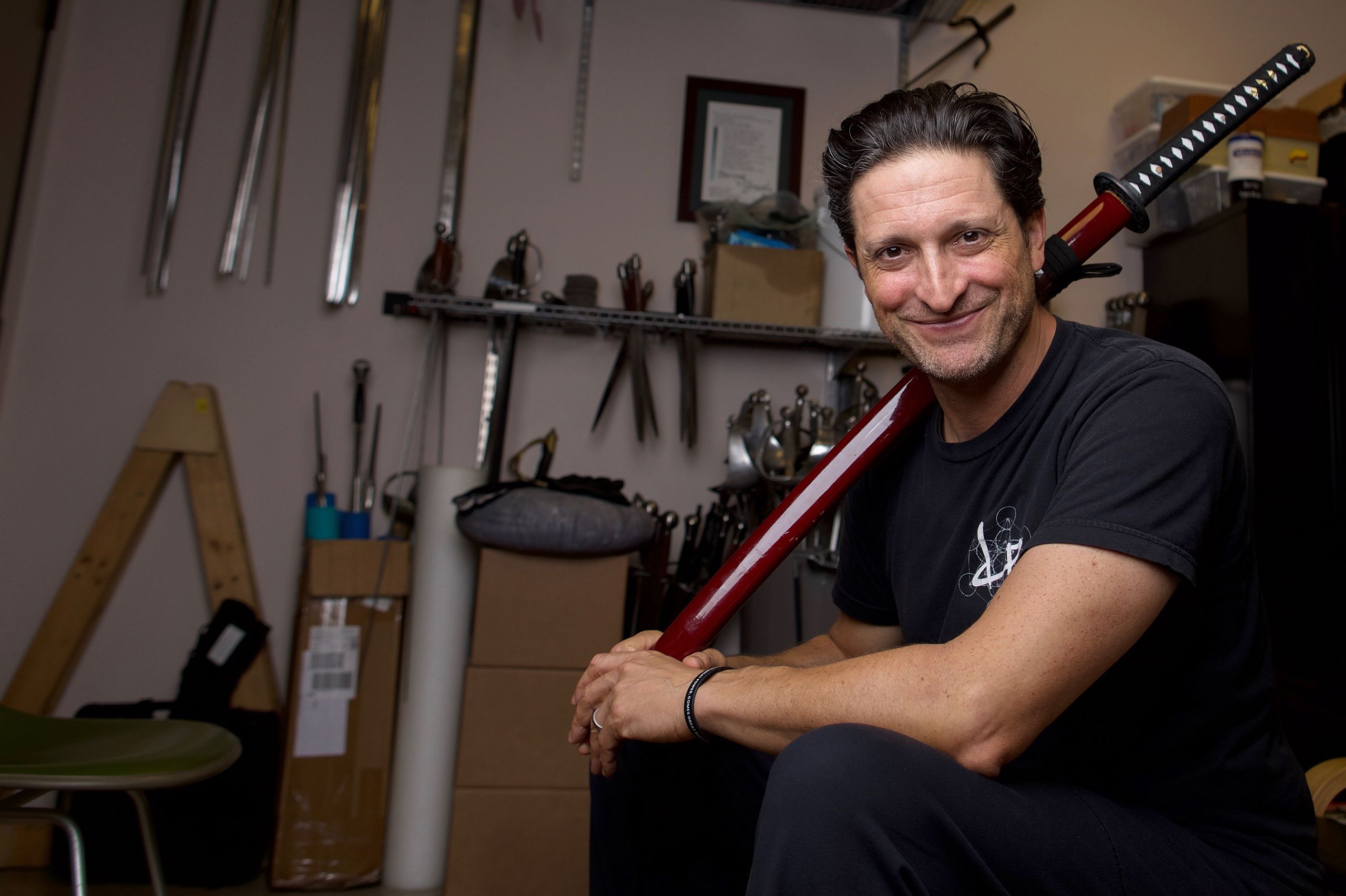WEAPONS OF MASS INSTRUCTION
Behind the Door of the UH Armory


Performance groups often have inventories of specialty assets necessary to entertain their particular audiences. The Houston Ballet, for example, has its shoe room. The Houston Grand Opera has a room solely for wigs. At the Alley Theatre, there’s a prop room filled with household furnishings. And at the University of Houston, there’s an armory that houses a stockpile of weapons used for stage combat.
Located in an office at the School of Theatre & Dance, the armory resembles a warlord’s prized hoard. Broadswords are just a few of the larger pieces among hundreds of weapons in the collection that includes quarterstaffs, knives, single swords, rapiers and daggers, and, of course, a variety of shields to block the deadly blows. The collection also incorporates theatrical firearms that only shoot blanks, such as long rifles, revolvers and semi- automatic pistols.
Each piece has a purpose – to add realistic tension to carefully choreographed fight scenes and to serve as educational tools for UH thespians in training. Of the eight shows produced by the SOTD each year, actors may need to deal with some sort of violence, from flying fists to slinging steel, in as many as half of them. These weapons are also used for stage combat scenes in the annual Houston Shakespeare Festival productions.
Adam Noble is the keeper of the menagerie of mayhem and one of two fight directors at UH certified by the Society of American Fight Directors, as well as an associate professor of Acting and Movement.
When it comes down to teaching students how to use these weapons and present the illusion of violence, Noble says it’s really about storytelling.
“I think of it like teaching a martial arts class. We are dealing with deadly weapons – even if it’s our own hands and feet,” said the lifelong martial artist. “It has to be run like a dojo, but in a dojo, I am teaching you how to defend yourself or destroy another person. In a stage combat class, we are teaching you how to pretend to defend yourself or destroy another person.”
When Noble arrived at UH in 2013 from Indiana University, the armory lacked the full complement of weapons necessary to properly train and certify students in the eight disciplines incorporated by the Society of American Fight Directors: unarmed, rapier and dagger, broadsword, single sword, smallsword, broadsword and shield, quarterstaff and knife.
Students in the undergraduate and graduate acting programs take stage combat as part of their required movement classes. To earn their certification, students are required to complete at least 30 hours of training with these weapon styles and to successfully perform a skills proficiency test in front of an SAFD Fight Master. At UH, this training comes from Noble and UH Professor Jack Young.
In the beginning, struggling for funds to bolster his supply of theatrical weaponry, Noble began to rent the UH Armory weapons to the Houston theater community. This can be incredibly helpful, especially for smaller theaters, as a high-quality blade can run $400 to $500. Common swords are the cheapest at just under $100 a pop, but they need to be replaced often. Noble utilized the rental proceeds to acquire more weapons with which to train his students, thereby augmenting his rental supply as well.
“If people need weapons for a sword and shield fight, we rent them out,” he explained. “From that pot of money, I can maintain and buy new weapons to teach our students.”
During the past six years, Noble has been instrumental in making sure the precious supply of steel and aluminum remain stage-worthy, because they do wear out over time. In Houston, the coastal climate is always the weaponry’s first enemy.
“I have to clean all the weapons every semester, even if they are sitting fallow, because of the level of humidity here. Human oils and moisture are the enemies of steel. Even a casual touch becomes rust almost instantaneously,” explained Noble, who says a Scotch-Brite pad, used to scrub heavy-duty dishes, and some good old elbow grease will remove the rust. Then he adds a layer of machine oil for protection. “It’s preventative maintenance ... like maintaining your car.”
Keeping them all in good shape is a constant battle, but it’s one he enjoys fighting.
Noble, who started at UC-Berkeley as a pre- med student, switched to acting and choreo- graphed his first stage fight in 1992. Behind him are some of the hundreds of weapons in the UH Armory.

